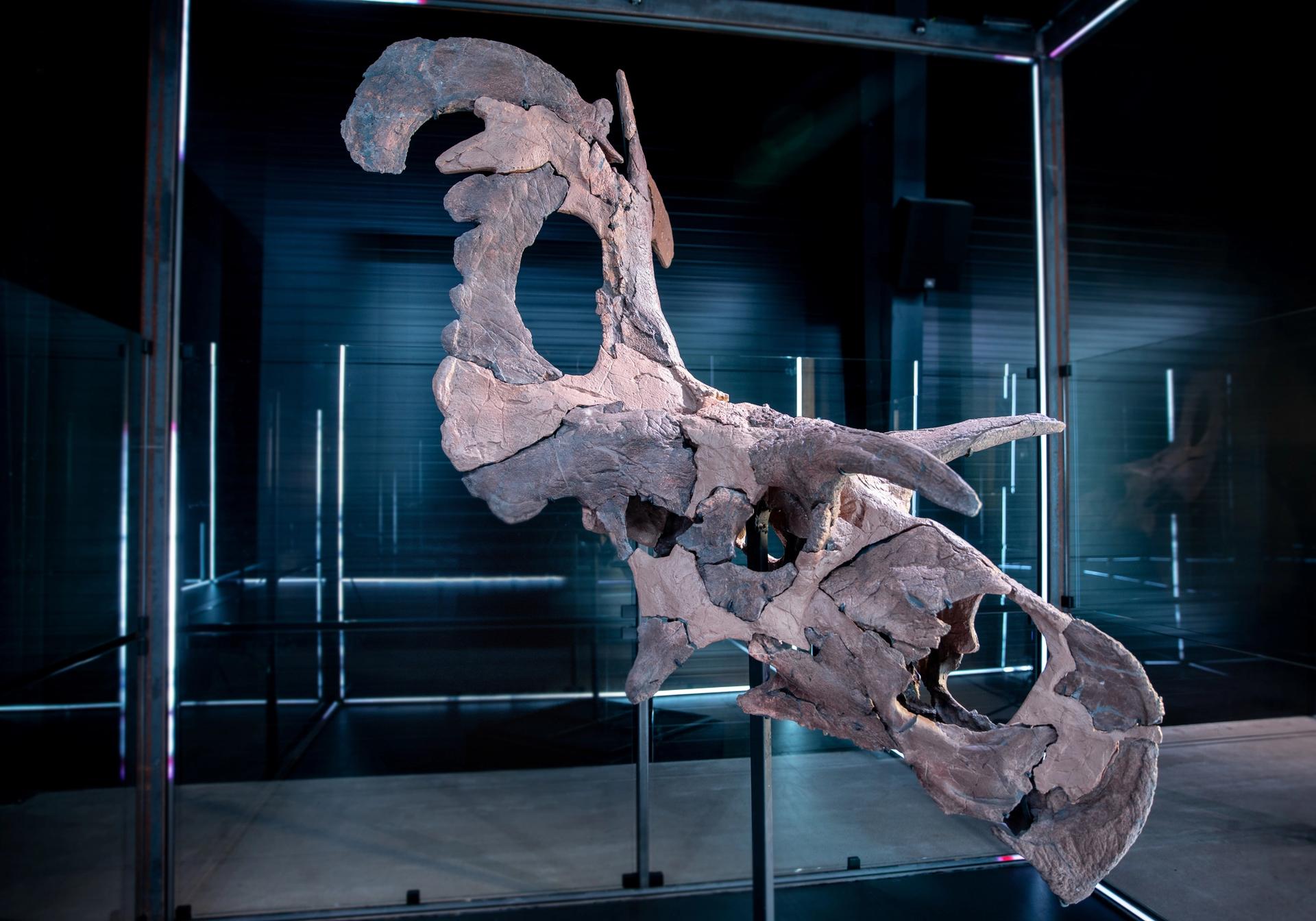Lokiceratops rangiformis
Lokiceratops rangiformis
Lokiceratops rangiformis
We are thrilled to present one of the most significant dinosaur discoveries of recent times: Lokiceratops rangiformis. Unearthed from the badlands of northern Montana, this remarkable horned dinosaur offers invaluable insights into the diversity and evolution of ceratopsians.
The Discovery
Lokiceratops rangiformis was discovered in 2019. This fossil find is revolutionary, revealing new information about the evolutionary pathways and environmental adaptations of horned dinosaurs.
Unique Features
Lokiceratops rangiformis is distinguished by several unique features:
- Absence of a Nose Horn: Unlike many of its relatives, Lokiceratops lacks a nose horn.
- Massive Frill Horns: It possesses the largest frill horns ever found on a horned dinosaur, including huge, blade-like horns on the back of its frill and an asymmetric spike in the middle.
- Size and Weight: This herbivorous giant measured approximately 22 feet (6.7 meters) in length and weighed around 11,000 pounds (5 metric tonnes).
Evolutionary Significance
Lokiceratops lived about 78 million years ago during the Late Cretaceous period, preceding its famous cousin Triceratops by at least 12 million years. The species' unique characteristics and early appearance provide crucial evidence for the rapid diversification and evolutionary adaptability of ceratopsians.
Habitat and Ecosystem
Lokiceratops thrived in the swamps and floodplains of Laramidia, an ancient island continent that now forms part of western North America. This region was a hotbed of dinosaur diversity, with Lokiceratops coexisting alongside four other horned dinosaur species, each occupying distinct ecological niches.
Scientific Impact
The discovery of Lokiceratops rangiformis pushes the boundaries of our understanding of ceratopsian evolution. It highlights the importance of showy displays in their development and the role of sexual selection in their rapid diversification. This finding underscores the high level of endemism and speciation rates among horned dinosaurs, suggesting that dinosaur diversity in the Late Cretaceous period was greater than previously thought.
Exhibit at the Museum of Evolution
The Museum of Evolution in Maribo, Denmark, proudly displays the only known specimen of Lokiceratops rangiformis. Visitors can marvel at the real skull and a life-like reconstruction that brings this ancient creature to life. Our exhibit offers a unique, multi-sensory experience with lights, sounds, and scents that recreate the prehistoric world in a modern, immersive way.
